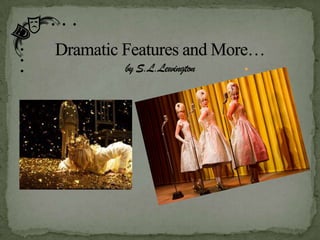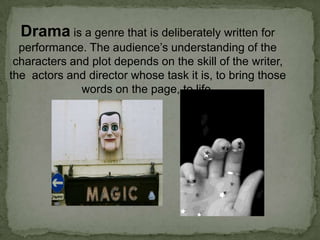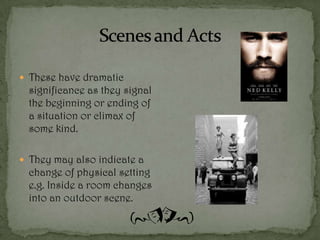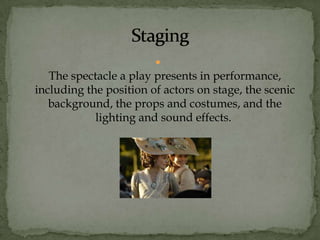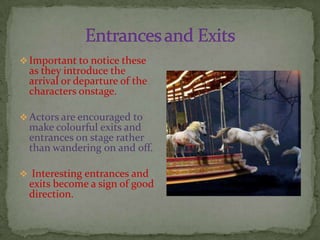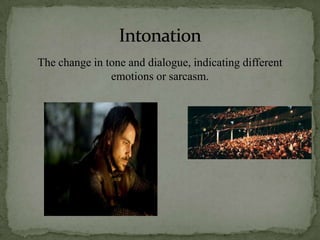The document discusses the elements and techniques of drama as a performance genre, highlighting the importance of dialogue, stage direction, and character interaction in conveying the plot. It contrasts plays with novels, emphasizing the reliance on performance and visual cues, such as body language and subtext, to interpret meaning. Additionally, it covers the significant roles of props, sound effects, and lighting in enhancing the overall theatrical experience.
